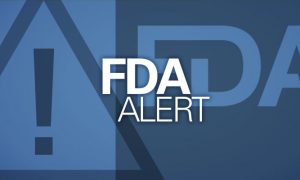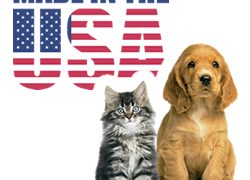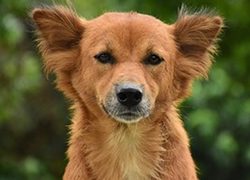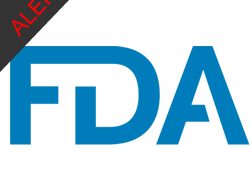We’re always hearing that Americans are getting fatter. Unfortunately, so are our pets. According to one survey http://petobesityprevention.org/, it’s estimated that 58 percent of cats and 54 percent of dogs in the United States are overweight or obese.
Why are dogs fat?
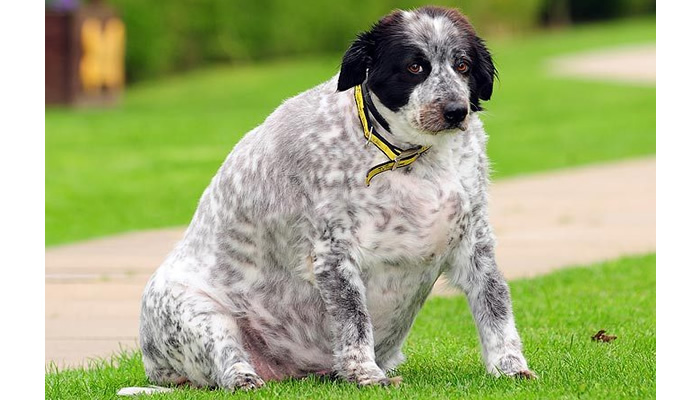
There are various reasons to explain why our dogs are overweight today:
- Too much food;
- Not enough exercise;
- Too many snacks and treats;
- Health problems for some dogs.
By far the biggest reason dogs today are overweight is simply because they are being fed too many calories. The vast majority of commercial foods today, whether canned, kibble, in pouches, freeze-dried, or any other formula, have plenty of nutrients and calories. The AAFCO minimum requirement for fat in an adult dog’s maintenance diet is a mere 5 percent (Table 3). This figure is so low that even most low-calorie or weight control dog foods contain higher percentages of fat. Even in a growth and reproduction diet (all life stages), the minimum fat percentage is only 8 percent. You may find this percentage in some low-calorie or weight control dog foods. Any good adult dog food you buy will likely have more than 8 percent fat.
Which foods have the most fat?
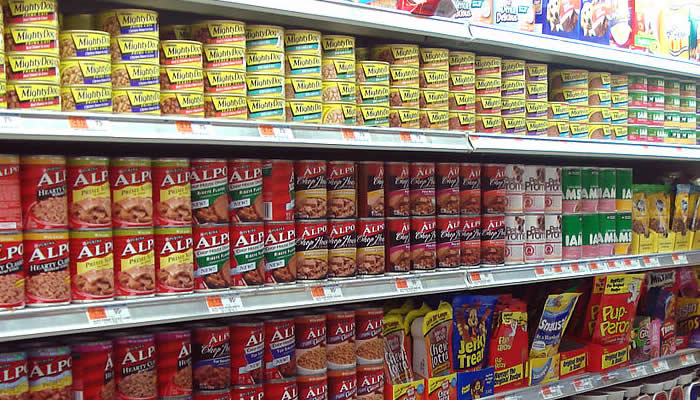
Most premium dog foods today, especially grain free kibbles, will have a fat percentage of 15 percent and higher. Very often grain free dog foods or foods that have higher amounts of meat will also have higher percentages of fat. So, while the food can be beneficial for your dog in terms of having good quality ingredients such as meat protein and avoiding certain grains, the high-fat content can put unhealthy pounds on your dog. These foods can be very high in calories.
Many premium dog foods today use multiple forms of fat among their ingredients, too. For example, a food may list chicken fat, salmon oil, fish oil, and flaxseed oil in the ingredient list. Presumably, the salmon oil, fish oil, and the flaxseed oil are present for specific purposes such as adding omega-3 and other nutrients to the food. But, together with the chicken fat, this can raise the fat percentage in the food. These are desirable ingredients, to be sure, but you need to pay attention to the overall fat percentage in the food.
It’s usually a good idea to choose a food that has a fat percentage between about 12-17 percent. Some performance dog foods may have a slightly higher percentage of fat but these foods are for active working dogs, such as hunting dogs, who will be burning off the calories. Foods that have a fat percentage higher than this will probably make your dog gain weight.
Carbs
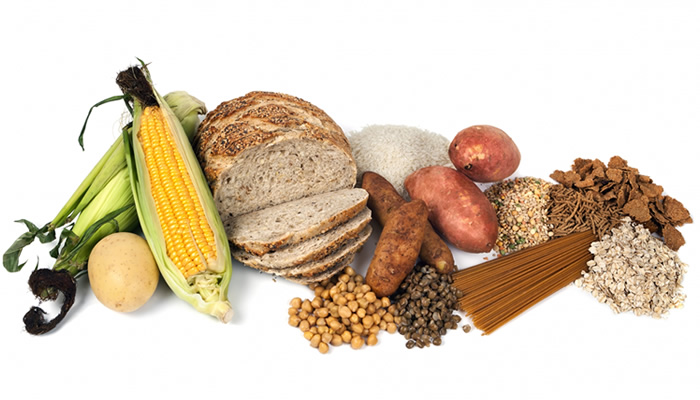
Many grain free dog foods can also be high in carbohydrates as well. Even though these foods do not have some of the grains that people may want to avoid, such as corn and wheat, they often substitute other carbohydrates such as potatoes and sweet potatoes which contribute calories to the food.
Foods that use grains, whether they contain corn or not, can also be high in carbohydrates which add calories to the food.
Depending on how many carbohydrates are in the dog food, these ingredients can add weight to your dog. Dogs don’t have a nutritional need for carbs (and neither do humans) but most dog foods do contain at least some carbohydrates. They supply a source of energy. But they can be problematic if there are too many in the food and your dog is not burning them off. It’s usually a good idea to choose a dog food that has low to moderate carbs so your dog can use them up with exercise.
Snacks and treats
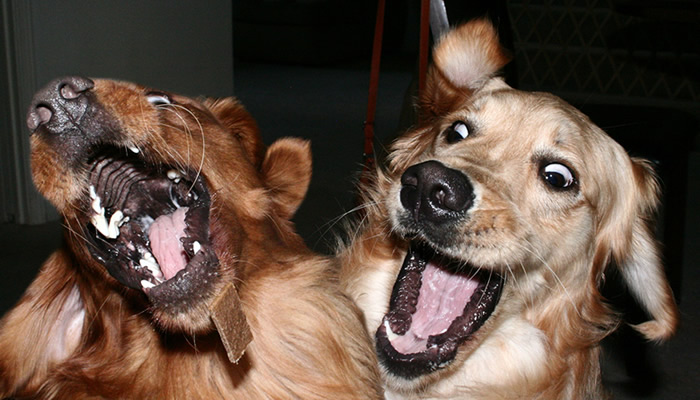
Your dog’s snacks and treats are most likely to be empty calories. Many snacks are made from wheat so you should be sure to check the ingredient list – especially if your dog has any allergies or food sensitivities. Many dog lovers don’t realize that the calories in treats can quickly add up. One little treat can contain 15 calories or more. If you are going to give your dog treats and snacks, you should deduct those calories from your dog’s daily allotment of calories. Otherwise, you are simply adding extra calories to his diet. Treats shouldn’t make up more than about 10 percent of your dog’s daily calories. Otherwise, you risk causing an imbalance in your dog’s nutrition.
The way you feed your dog matters
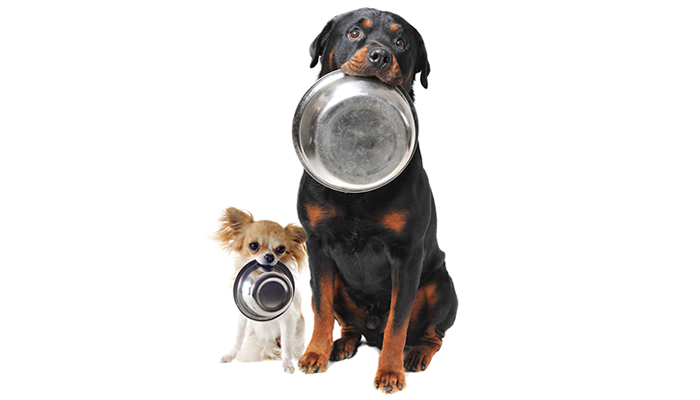
The way you feed your dog also makes a difference in his weight. Most dogs do well eating two meals per day instead of one large meal. Eating two meals per day is also preferable to leaving food down for your dog to eat all the time (“free feeding”). Leaving food down all the time encourages dogs to snack throughout the day which has been shown to lead to obesity. Instead, measure your dog’s meals, put the food down and encourage your dog to eat. Leave the food down for 15-20 minutes then remove it. Believe it or not, this can make a big difference in your dog’s waistline.
Exercise
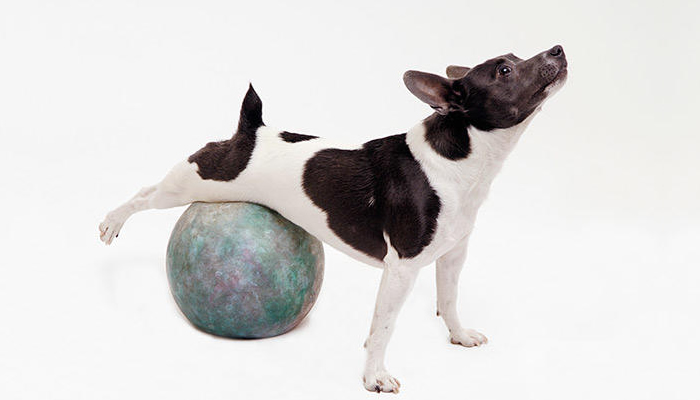
It may seem obvious, but you can help your dog avoid becoming overweight or obese by making sure that he gets regular exercise every day. Different breeds/types of dogs require different amounts of exercise, but every dog can use some basic exercise for muscle tone and good health. This is one of the best ways to help your dog stay fit and healthy and avoid becoming overweight.
As your dog ages, his food and exercise needs will change. He probably won’t stay slim and fit forever. But if you help him stay active and keep a good weight while he’s a mature adult dog, his older years will be that much easier for both of you. Staying fit will help your dog avoid many health problems throughout his life and into old age.


